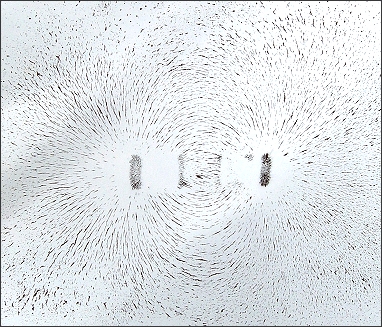|
|
Permanent Magnets
Magnets always have two poles called the north pole and the south pole. In a bar magnet the poles are close to the ends of the magnet. A magnet can exert a force on another magnet (or a magnetic material) even when the two magnets are not in contact. The rule for the direction of the force is usually summarized as:
The space around the magnet where this force is exerted is called a magnetic field. Magnetic fields are invisible, but one way show them is to place a sheet of card over a magnet and sprinkle iron filings on the card. If you then gently tap the card, the iron filings arrange themselves in the pattern show above. We can represent a magnetic field as a set of lines called field lines, as shown in the animation. Choose different combinations of magnets and see how the pattern of field lines changes. Field lines obey these rules:
|
 This button hides or shows arrows in the field lines
This button hides or shows arrows in the field lines This button hides or shows the grid.
This button hides or shows the grid. Click anywhere on to show a plotting compass.
Click anywhere on to show a plotting compass. This button switches to a full screen view.
This button switches to a full screen view.